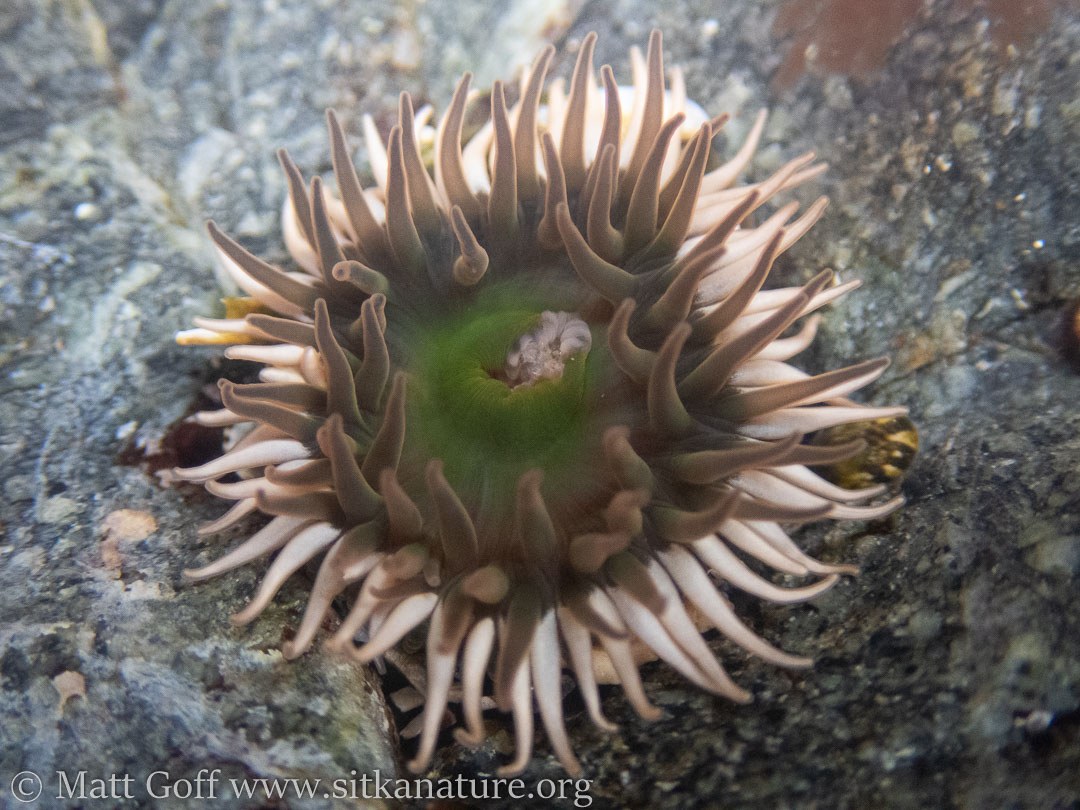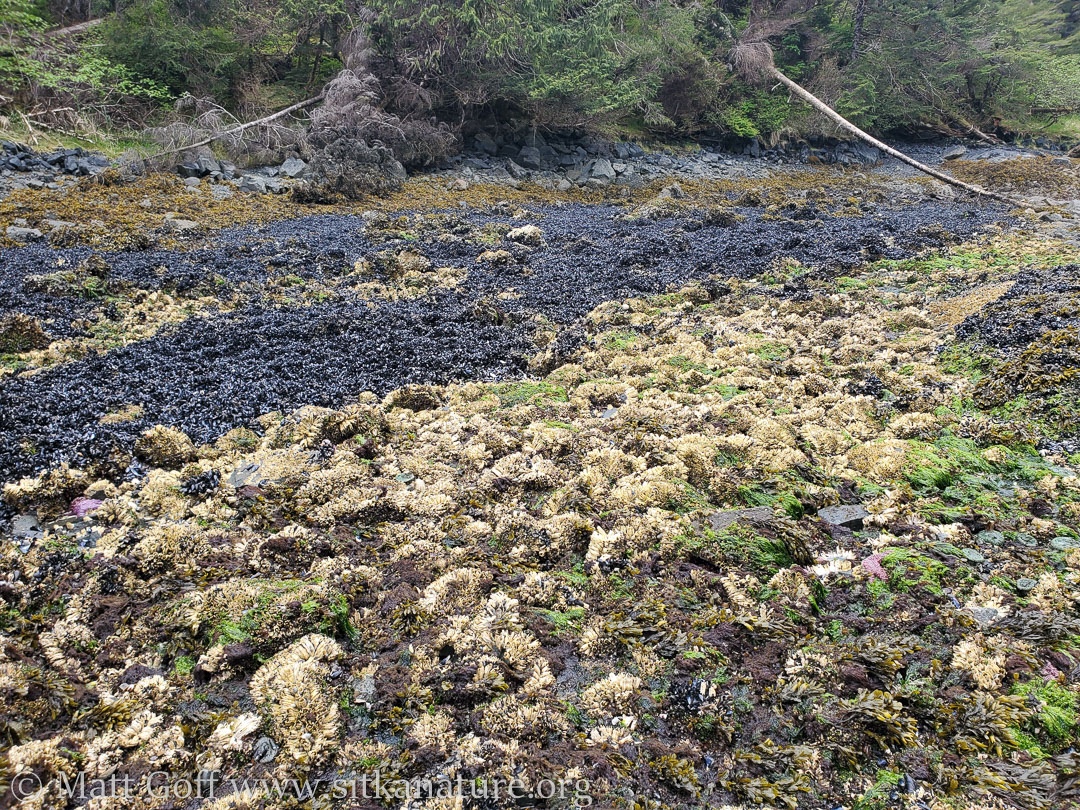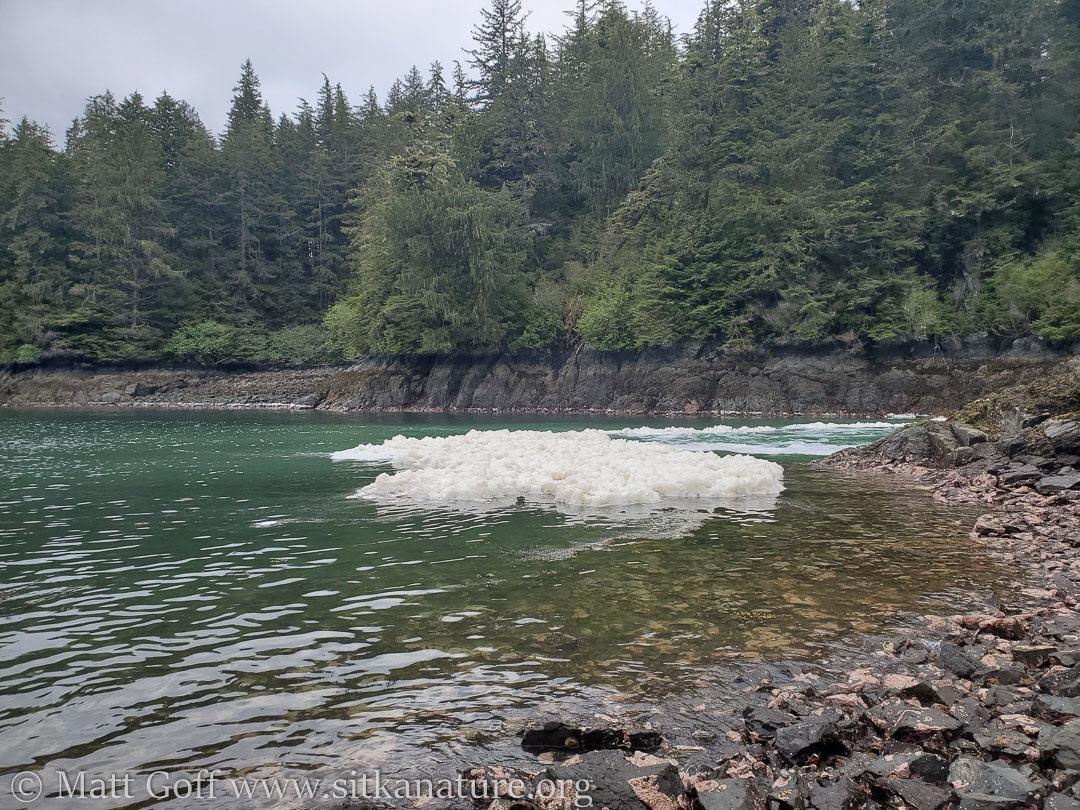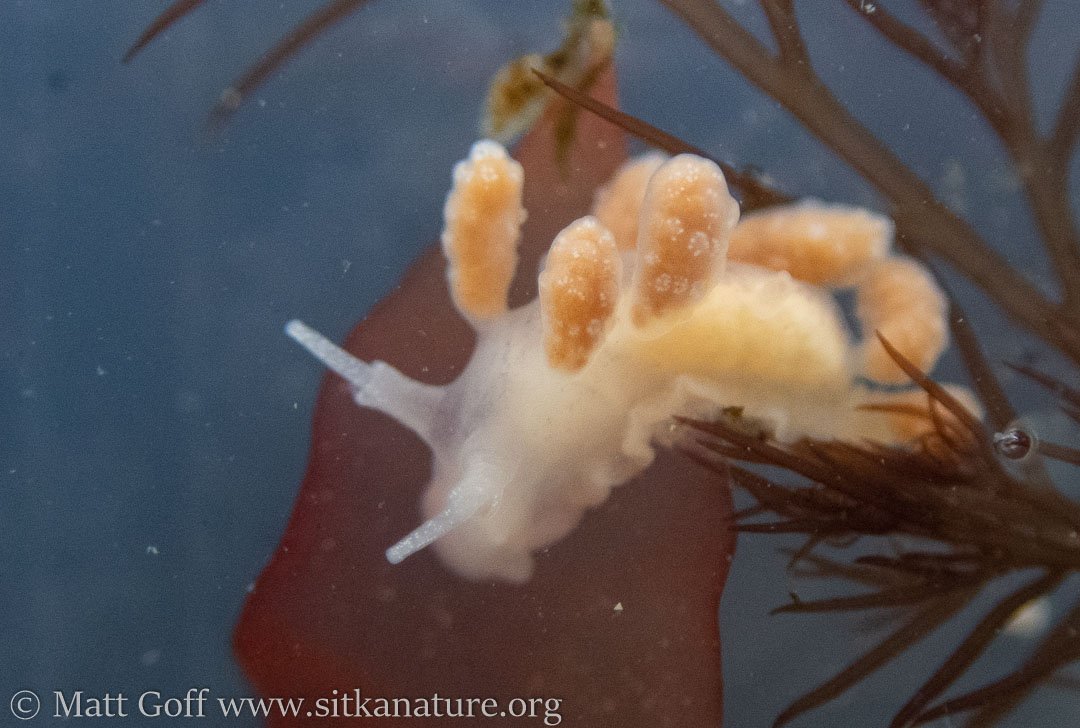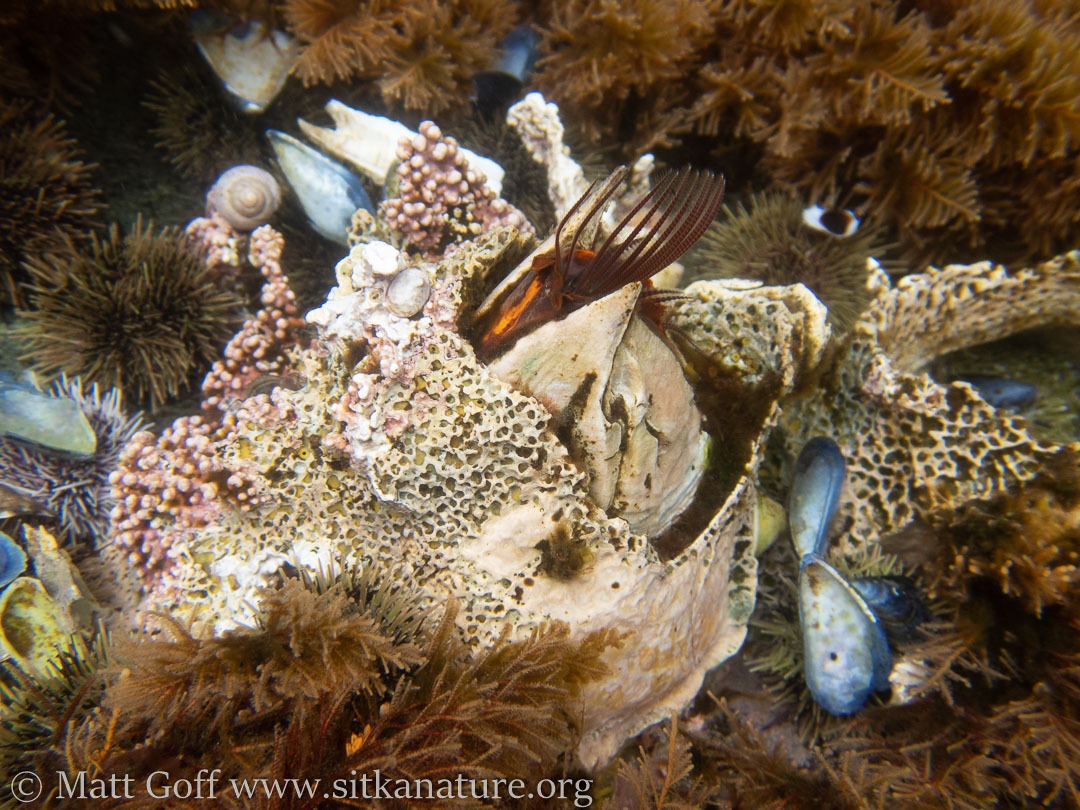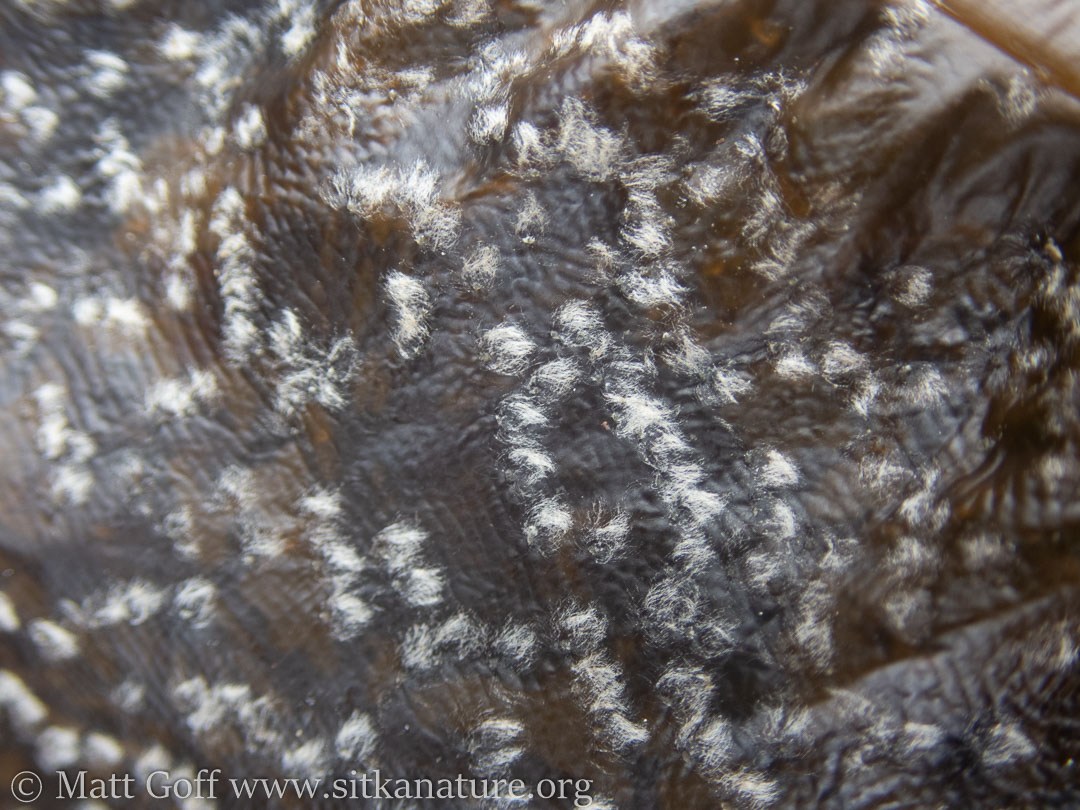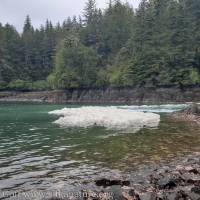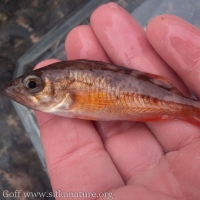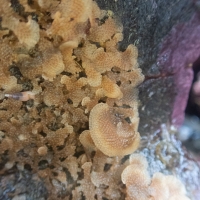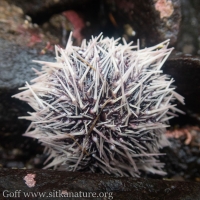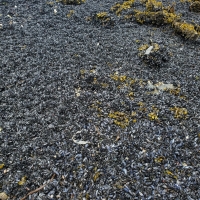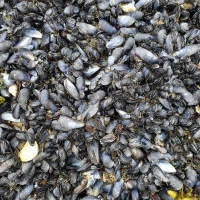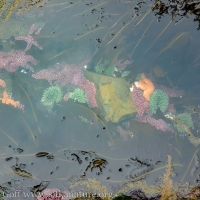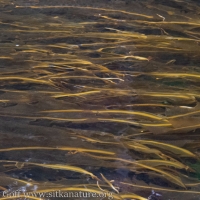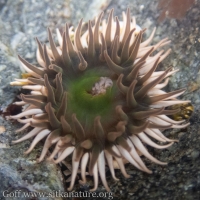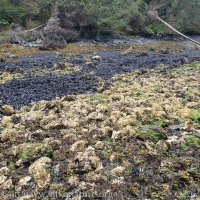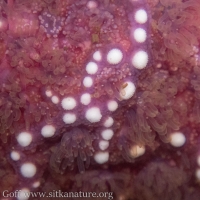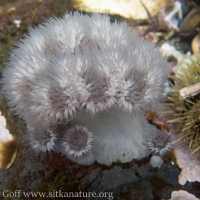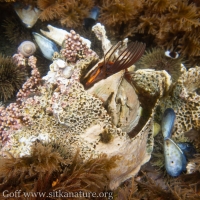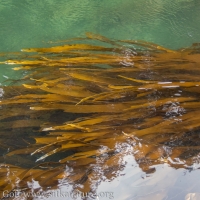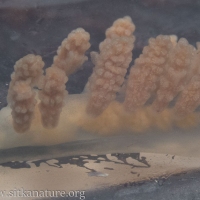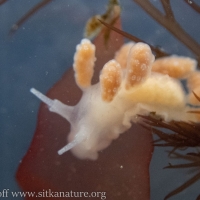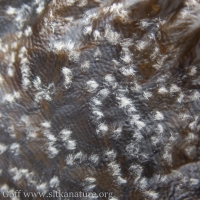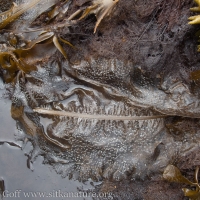May gray continued today. Although the forecast mostly cloudy, what seemed to be a marine stratus layer persisted throughout, with only a couple of very small spots of blue showing through a couple of times that I noticed.
Satellite imagery showed it was clear on the east side of the island, however.
This morning was the lowest predicted tide of this year (I think) at a -3.2ft or so. With a little bit of atmospheric help, it ended up being -3.5ft.
The tide was a bit after 8am, and Rowan and I had plans to join Paul and Brooke and met up with a Roland and Michelle at No Thorofare Bay. It was a bit of an early rise time for us, but we were able to get moving and be down at the harbor by 7am.
It’s the third time I’ve done a low tide here, the first coming in early June 2012, the next in late May 2017 (I would link to the photojournal posts, but both remain in my extensive backlog of unpublished entries).
As on prior occasions, there was a nice mix of things – including several species that were completely new to me, and others which I had found here previously, but nowhere else (so far). Of course plenty of others that I’ve also seen elsewhere. Although it will take some time to get everything into iNaturalist and identified, I think I may have half a dozen or so new-to-me species.
It did get a little crowded at times as we took turns getting photos of a particular organism, but having several sets of eyes helped uncover more than we would have seen otherwise.
One highlight was getting pictures of a giant acorn barnacle actively feeding. It was also interesting to see how much its shell had been colonized by the yellow boring sponge.
I think I’ve noticed in the past white dots on Alaria kelp, but hadn’t thought much of it. Today I did take pictures, and realized they were a little hairy looking. I tried taking some pictures underwater, but without much success. I will try to remember to look for this again and try to get better photos.
One thing I had not stayed long enough to observe before was the switch from outflow to inflow at the narrows. I don’t remember the exact time, but I think it was well past two hours after low tide when the outer tide was high enough for the outflow to slow down enough for one of our group to kayak up through it. Over the next few minutes, it slowed to a stop then started to flow in. By a few minutes after that, it was flowing in fast, and would have been difficult (at best) to paddle back out against. It may be interesting to set up a time lapse on the process someday.
We stopped by Twin Island for lunch on the way back. It was interesting to visit the small island, which Roland and Michelle have a house on. They had a couple of nice Sitka mountain ash trees which seemed quite happy.
This evening I went to ultimate and discovered my legs were stiff, and approaching a bit sore. I think it was due to the 3+ hours of up and down plus crawling around at the low tide.

